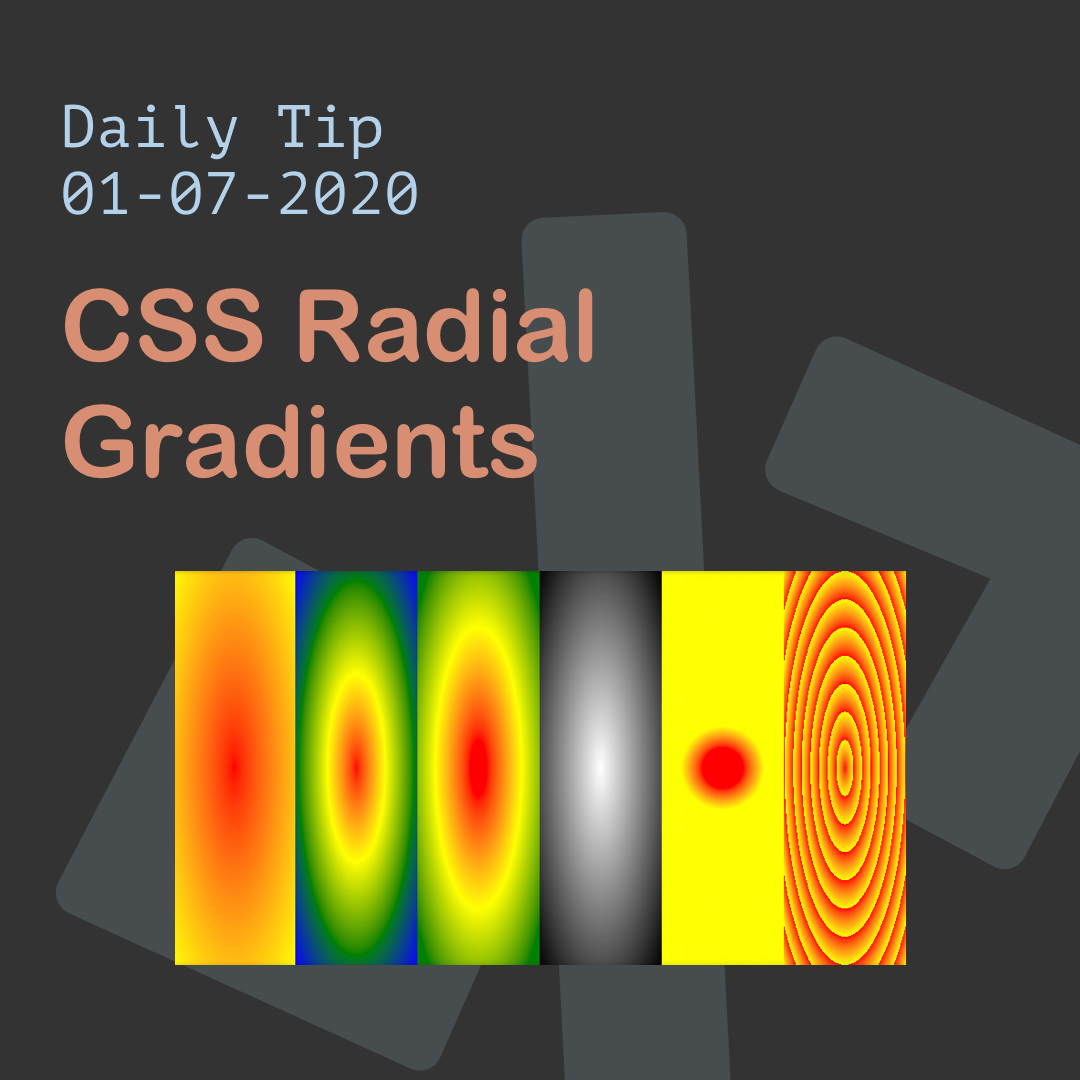

Just take note though, all the browsers are still in the process of providing full support for this feature, so they still need the vendor prefix. To create the Circular gradient we can simply do it this way:īackground-image: radial-gradient(center center, circle cover, #ffeda3, #ffc800) Īs the name implies, the gradient shape will be a circle. So, here is how we write the syntax to create the Elliptical gradients, and this time we will use cover for the gradient size, so it will spread widely, covering the container īackground-image: radial-gradient(center center, ellipse cover, #ffeda3, #ffc800) Lastly, the third and the fourth define the color combination. The gradient’s shape is sized so it exactly meets the farthest corner of the box from its center. Similar to closest-side, except the shape is sized to meet the side of the box farthest from its center (or vertical and horizontal sides). The gradient’s shape is sized so it exactly meets the closest corner of the box from its center. The gradient’s shape meets the side of the box closest to its center (for circles) or meets both the vertical and horizontal sides closest to the center (for ellipses). The second value defines the shape and the gradient size, there are two arguments to shape the gradients, first the ellipse which is the default, and the second is circle.Īnd for the gradient size, we can select one of the following six arguments.

We can use a descriptive keyword such as top, bottom, center and left, or we can also be more specific like, 50% 50% to set the gradient at the center or 0% 0% to set the gradient to start at top left. The first value defines the gradient position.

There are four values to be included in the function to set the gradient properly. Then, to create the radial gradient we simply call it with this radial-gradient() function. This is for better compatibility when we also need to add background-color in a single rule set, so that they do not collide with one another. The gradient in CSS3 is declared using the background-image property. This time we will cover their relative, Circular and Elliptical Gradients. In the previous post we’ve showed you how to create Linear Gradients. The gradient's shape is sized so it exactly meets the farthest corner of the box from its center.Today we are going to continue our discussion on CSS3 Gradients. The gradient's shape is sized so it exactly meets the closest corner of the box from its center. The gradient's shape meets the side of the box closest to its center (for circles) or meets both the vertical and horizontal sides closest to the center (for ellipses). Rendering of color-stops in CSS gradients follows the same rules as color-stops in SVG gradients. This value is comprised of a color value, followed by an optional stop position (either a percentage between 0% and 100% or a length value along the gradient axis). This is one of circle (meaning that the gradient's shape is a circle with constant radius) or ellipse (meaning that the shape is an axis-aligned ellipse). If omitted, the default is center.Īn angle establishing the gradient line, which extends from the starting point at this angle this is 0deg by default. Values are separated be a comma followed by a space.Ī position, interpreted in the same way as background-position or -moz-transform-origin. For this functionality, see -moz-repeating-radial-gradient. The -moz-radial-gradient property does not allow repeating gradients. You specify a gradient value instead of an image URL. Mozilla currently only supports CSS gradients as values of the background-image property, as well as within the shorthand background. Firefox supports two kinds of CSS gradients: linear and radial. Use of CSS gradients can replace images and reduce download time, create a more flexible layout, and look better while zooming. Gradients are smooth transitions between two or more specified colors. The CSS -moz-radial-gradient Mozilla extension property value was introduced in Gecko 1.9.2 ( Firefox 3.6).


 0 kommentar(er)
0 kommentar(er)
